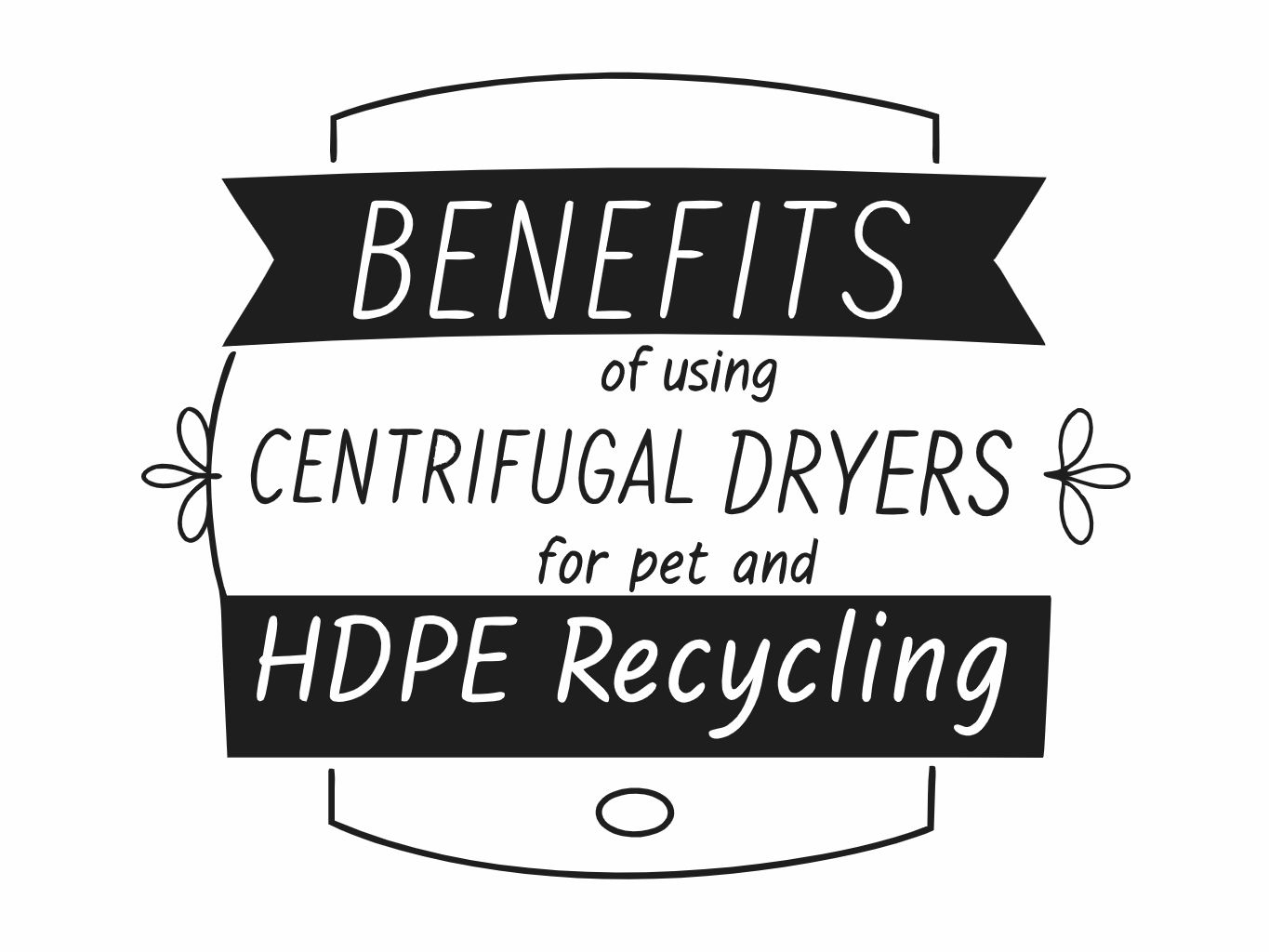Centrifugal dryers play a critical role in the plastic recycling process, particularly for materials like PET (polyethylene terephthalate) and HDPE (high-density polyethylene). These dryers are designed to remove moisture efficiently, ensuring that recycled plastics meet quality standards for reuse in manufacturing. Below, we’ll explore why centrifugal dryers are especially effective for PET and HDPE recycling, how they work, and the key benefits they offer.
How Centrifugal Dryers Work in Plastic Recycling
Centrifugal dryers use high-speed rotation to remove water and moisture from plastic materials. After washing, plastic flakes or pellets are fed into the dryer. The spinning motion generates centrifugal force, which pushes water outward, separating it from the plastic. Simultaneously, heated air or ambient airflow may be introduced to accelerate the drying process.
This method is particularly effective for PET and HDPE because these plastics are often processed as flakes or pellets, which are ideal for centrifugal drying. The combination of mechanical force and airflow ensures thorough moisture removal without damaging the material.
Why Centrifugal Dryers Are Ideal for PET and HDPE
1. Efficient Moisture Removal
PET and HDPE are commonly used in applications like beverage bottles, food containers, and detergent bottles, where moisture content must be minimal for successful reuse. Centrifugal dryers can reduce moisture levels to below 1%, meeting the strict requirements for high-quality recycled plastics. This is essential for applications like injection molding or extrusion, where excess moisture can cause defects.
2. Preservation of Material Integrity
Centrifugal dryers operate without excessive heat, which helps preserve the physical and chemical properties of PET and HDPE. Unlike thermal drying methods that may degrade plastics, centrifugal drying ensures that the recycled material retains its strength, clarity, and durability. This is especially important for PET, which is often reused in food-grade applications.
3. Energy Efficiency
Compared to other drying methods, centrifugal dryers consume less energy. They rely primarily on mechanical force rather than prolonged heating, making them a cost-effective and environmentally friendly option for recycling facilities. This is particularly beneficial for large-scale operations processing significant volumes of PET and HDPE.
4. High Throughput
Centrifugal dryers are designed to handle large quantities of material quickly. This makes them ideal for PET and HDPE recycling, where high throughput is necessary to meet industry demand. The continuous operation of these dryers ensures minimal downtime and maximized productivity.
5. Reduced Contamination Risk
During the recycling process, PET and HDPE flakes or pellets must remain free from contaminants. Centrifugal dryers minimize the risk of contamination by using enclosed systems that prevent external particles from entering. This ensures that the final product is clean and ready for further processing.
Key Benefits for Recycling PET and HDPE
Improved Product Quality
Centrifugal dryers help produce high-quality recycled PET and HDPE that meets industry standards. By effectively removing moisture, they prevent issues like bubbling, discoloration, or brittleness during manufacturing. This ensures that recycled plastics can compete with virgin materials in terms of performance and appearance.
Cost Savings
Recycling facilities benefit from the energy efficiency and low maintenance requirements of centrifugal dryers. These machines reduce operational costs while delivering consistent results, making them a smart investment for PET and HDPE recycling operations.
Environmental Impact
Centrifugal dryers support sustainable recycling practices by reducing energy consumption and enabling the reuse of PET and HDPE. By producing high-quality recycled materials, they help reduce the demand for virgin plastics, conserving natural resources and lowering carbon emissions.
Applications of Recycled PET and HDPE
Recycled PET and HDPE are used in a wide range of industries, including:
- Packaging: Bottles, containers, and films.
- Construction: Pipes, panels, and insulation materials.
- Textiles: Polyester fibers made from recycled PET.
- Consumer Goods: Toys, furniture, and household items.
The effectiveness of centrifugal dryers in preparing these materials for reuse makes them a cornerstone of the recycling process.
Conclusion
Centrifugal dryers are an essential tool for PET and HDPE recycling, offering unmatched efficiency, energy savings, and material preservation. Their ability to remove moisture quickly and thoroughly ensures that recycled plastics meet the highest quality standards. For recycling facilities looking to optimize their processes, investing in centrifugal dryers is a practical and cost-effective solution.
To learn more about improving your plastic recycling operations, explore our guide to plastic washing systems or contact us for expert advice on choosing the right equipment for your needs.



